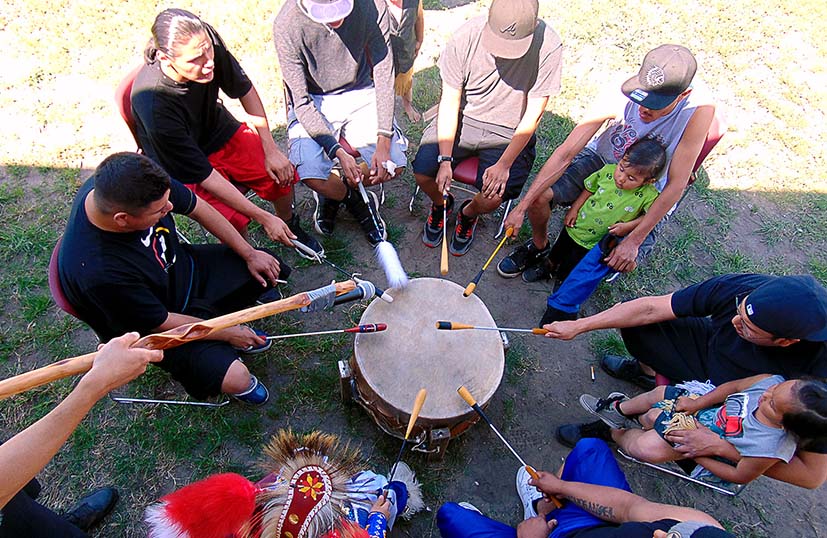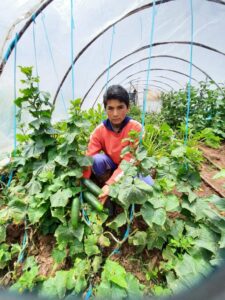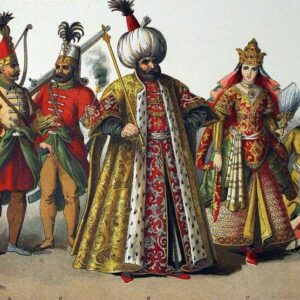Rituals play a crucial role in shaping community identity, particularly within Indigenous societies, where they interconnect elements of belonging, cultural values, and social relationships.
Through vibrant ceremonies and significant rites of passage, these practices not only serve to preserve longstanding traditions but also exhibit adaptability to modern influences.
Indigenous communities encounter challenges in sustaining these rituals in the context of changing times.
This article examines the impact of rituals on community identity, their evolution over time, and the strategies that can be implemented to ensure their continued relevance for future generations.
How Do Rituals Contribute to Community Identity?
.jpg_00.jpeg)
Rituals play a significant role in shaping community identity, particularly within indigenous societies where cultural practices serve as the foundation of social cohesion and collective memory.
These rituals encompass a range of ceremonies that reflect the community’s heritage, spirituality, and traditions, thereby reinforcing a unified sense of belonging and identity.
Through symbolic actions and communal gatherings, rituals foster connections among members and establish a framework for social structure and kinship relationships.
By participating in ritualistic practices, communities articulate their values and beliefs, thereby ensuring the continuity of their cultural identity across generations.
1. Creating a Sense of Belonging
Creating a sense of belonging constitutes one of the primary functions of rituals within communities, as they promote social bonding and enhance cultural identity among members. Through shared experiences such as festivals and communal gatherings, individuals reinforce their connections to one another and their collective heritage.
These rituals frequently provide a platform for individuals to unite under common beliefs and traditions, offering a venue for the celebration of both uniqueness and similarity. For instance, in numerous Indigenous cultures, annual harvest festivals not only acknowledge the significance of agrarian cycles but also serve to bring families and clans together, thereby reinforcing intergenerational ties.
Similarly, rituals such as weddings or religious ceremonies across various cultures encourage participation from the broader community, fostering inclusivity and collective action. These events cultivate a sense of belonging by affirming shared values and experiences, ultimately nurturing a vibrant and cohesive community fabric.
2. Reinforcing Cultural Values and Traditions
Rituals play a crucial role in reinforcing cultural values and traditions by embedding them within the social fabric of community life. They serve as vital conduits for the transmission of tribal customs and ancestral worship practices. Through storytelling and other ritualistic performances, communities are able to preserve and relay significant cultural narratives.
These practices often involve reenactments of historical events, celebrations of agricultural cycles, or honors bestowed upon deities, which reflect the shared beliefs and values of the group.
For instance, the Native American powwow exemplifies these traditions through dance, music, and storytelling, where each performance conveys narratives of ancestry and a connection to the earth. Similarly, African tribal ceremonies frequently integrate songs and dances that narrate ancestral folklore, imparting lessons and wisdom to subsequent generations.
By participating in such rituals, community members not only reinforce their social bonds but also cultivate a lasting identity that is deeply rooted in their rich cultural heritage.
3. Strengthening Social Bonds
Rituals play a critical role in strengthening social bonds within communities, fostering relationships that enhance community resilience and a sense of kinship among members. Through shared rituals, individuals establish meaningful connections that contribute to a robust communal identity.
These collective experiences often serve as a foundation for trust and mutual support, which are essential during times of crisis. When individuals unite to celebrate customs or engage in communal gatherings, the interactions that result forge deeper relationships that can be relied upon in challenging situations.
Furthermore, rituals not only commemorate shared histories and values but also encourage participation from a diverse range of community members, thus promoting inclusivity. This inclusivity ensures that all individuals feel a sense of belonging, further solidifying the social fabric and strengthening the collective identity that characterizes the community as a whole.
4. Providing a Sense of Continuity
Providing a sense of continuity is a crucial aspect of rituals, as they connect community members to their ancestral lineage and collective memory, thereby fostering cultural preservation through intergenerational transmission. By participating in rituals, individuals reaffirm their identity and the heritage of their community.
These practices serve not only as reminders of shared history but also as dynamic platforms for educating younger generations about the values and customs that define their culture. Through storytelling, song, dance, and communal activities, elders convey wisdom and lessons that shape an individual’s understanding of their role within society.
As these rituals occur in a familiar environment, participants experience an enhanced sense of belonging and purpose, reinforcing the bonds that unite them. This continuous cycle of engagement ensures that traditions are not merely relics of the past but remain vibrant and evolving, adapting to contemporary contexts while retaining their core essence.
What Are Some Examples of Rituals in Indigenous Societies?
Indigenous societies worldwide demonstrate a profound diversity of rituals that reflect their cultural practices, encompassing ceremonies, festivals, and rites of passage.
These rituals fulfill multiple functions, ranging from the commemoration of significant life events to the celebration of seasonal changes, and they are essential for the preservation of cultural identity.
1. Ceremonies and Celebrations
Ceremonies and celebrations represent vibrant expressions of community life, functioning to unite members through shared cultural experiences and active participation. These events often incorporate traditional music, dance, and art, which collectively reflect the community’s identity and values.
For many indigenous societies, such occasions are crucial for the preservation of cultural heritage, as they frequently align with seasonal changes, agricultural cycles, and significant historical events. Festivals may comprise a combination of storytelling, rituals, and feasting, fostering intergenerational connections and facilitating the transmission of knowledge from elders to youth.
Participants engage not merely as spectators but as active contributors, thereby reinforcing their roles within the broader community. These gatherings not only celebrate rich traditions but also enhance social cohesion, providing opportunities for reflection and recognition of achievements, thereby forging deeper bonds among individuals and solidifying their shared sense of belonging.
2. Rites of Passage
.jpg_01.jpeg)
Rites of passage serve as significant rituals that symbolize individuals’ transitions into new social roles, marking important milestones in their lives while contributing to identity formation within the community. These rituals often involve spiritual connections that give the power to individuals and reinforce their sense of belonging.
In many indigenous cultures, these ceremonies facilitate personal growth and social acceptance, guiding participants through profound transformations that align with cultural values and collective history. Through these experiences, individuals gain a deeper understanding of their responsibilities and roles within the community, which frequently leads to increased engagement and collaboration.
Such rites play a crucial role in preserving cultural heritage and strengthening communal ties, fostering a sense of unity and shared purpose. By honoring traditions and facilitating connections between generations, rites of passage become instrumental in shaping the social fabric and ensuring the continuity of cultural identity.
3. Daily Practices and Customs
Daily practices and customs within indigenous communities are often enriched with ritualistic elements that reinforce cultural continuity and embody indigenous knowledge. These practices reflect a profound connection to the land, ecology, and the heritage of the community.
Through ceremonies, storytelling, and seasonal activities, the communication of values and teachings occurs across generations, ensuring that essential traditions are preserved and adapted over time. Such practices not only serve to honor ancestors but also to educate younger members about their roles within the ecosystem and social frameworks.
Each ritual, whether it involves planting crops, honoring animals, or celebrating the changing seasons, symbolizes a deep respect for the natural world and illustrates the interconnectedness of life. These customs contribute to the creation of a shared identity among community members, fostering unity and resilience in the face of external pressures that threaten to erode their cultural landscape.
How Have Rituals Evolved in Indigenous Societies?
Rituals in indigenous societies, which are deeply rooted in ancestral practices and spiritual beliefs, have experienced substantial evolution as a result of various factors, including adaptation to contemporary societal dynamics, the effects of colonization, and the influences of globalization.
These transformations frequently give rise to cultural revitalization movements that seek to preserve vital elements of indigenous heritage and identity, fostering community resilience and cultural continuity in the process.
1. Adaptation to Modern Society
The adaptation of rituals to contemporary society illustrates the dynamic nature of cultural practices, allowing communities to maintain relevance while preserving their unique identities and tribal unity. This process frequently involves the incorporation of modern elements that resonate with younger generations, thereby promoting inclusivity and shared beliefs.
By integrating traditional customs with current social issues, these communities cultivate a sense of belonging and shared purpose among their members, strengthening community identity and social cohesion.
For example, certain indigenous groups are increasingly emphasizing environmental stewardship within their ceremonies, acknowledging the pressing need for ecological awareness in the present day. Such adaptations underscore the significance of dialogue and collaboration, creating environments where both elders and youth can share their perspectives and participate in community engagement.
This intergenerational exchange not only enriches the cultural fabric but also fortifies the bonds within the community, ensuring that ancient practices continue to evolve while respecting their historical significance and cultural rituals.
2. Influence of Colonization and Globalization
The impacts of colonization and globalization have compelled indigenous societies to confront intricate challenges in preserving their rituals and cultural identity, often leading to the emergence of movements advocating for indigenous rights and cultural preservation. These challenges have catalyzed a renewed emphasis on community give the power toment.
The encroachment of external cultures, combined with the economic demands of a globalized world, poses a significant threat to the integrity of traditional practices and ceremonial spaces. Consequently, many indigenous groups are not only endeavoring to sustain their unique customs but are also actively seeking recognition and respect for their land rights, languages, and belief systems.
This ongoing struggle has fostered a dynamic landscape of activism that underscores the necessity for dialogue and understanding between indigenous communities and broader societies. The importance of protecting these rituals transcends mere cultural pride; it is fundamentally about the survival of identities that have endured for centuries despite external pressures.
What Are the Challenges Faced in Maintaining Rituals in Indigenous Communities?
Indigenous communities encounter a variety of challenges in sustaining their rituals, which are essential for the preservation of traditional knowledge, cultural practices, and communal identity.
These challenges may arise from external pressures, societal changes, and the effects of generational differences.
1. Loss of Traditional Knowledge and Practices
The loss of traditional knowledge and practices presents a significant challenge for indigenous communities, as it jeopardizes the cultural transmission essential for sustaining their rituals, social structures, and identity markers. This erosion may arise from generational gaps and diminishing community participation.
When these invaluable customs and teachings diminish, the consequences extend well beyond the realm of rituals; they disrupt the very foundation of the community’s identity. As elders pass away without adequately imparting their wisdom, younger members may find themselves disconnected and struggling to maintain ties to their heritage.
The absence of traditional practices can weaken communal bonds, resulting in a loss of collective memory and historical continuity. Ultimately, this disconnection not only impedes the preservation of unique cultural expressions but also poses a risk of erasing indigenous identities altogether, leaving these communities vulnerable to external influences that may further dilute their distinctiveness.
2. External Pressures and Stereotypes
.jpg_10.jpeg)
External pressures and stereotypes present significant threats to the cultural identity of indigenous communities, undermining their rituals and practices. Such pressures can obstruct social integration and weaken community resilience against cultural erasure.
These external influences often manifest as discrimination, economic marginalization, and misrepresentation in media, all of which serve to delegitimize traditional customs and beliefs. Consequently, indigenous individuals may feel compelled to modify or abandon their rituals to meet societal expectations, resulting in the erosion of cultural heritage.
This adaptation, while potentially necessary for immediate social cohesion, ultimately compromises the authenticity and continuity of indigenous identity, thereby undermining the very fabric of their communities.
The challenge lies in fostering resilience and ethnic identity, enabling these communities to navigate external pressures while safeguarding their unique cultural narratives and practices, thus ensuring their thriving in a rapidly changing world.
3. Generational Differences
Generational differences significantly influence cultural transmission within indigenous communities, impacting the engagement of younger members in traditional rituals. Such differences can pose challenges to community give the power toment and identity politics as younger generations endeavor to redefine their cultural expressions.
As the generational gap widens, older members often experience anxiety regarding the potential decline or alteration of cultural practices beyond recognition. In contrast, the youth, equipped with contemporary influences and fresh perspectives, perceive these rituals through a different lens, which fosters critical discussions about their relevance and the necessity for adaptation.
This dynamic interplay can generate both tension and inspiration, resulting in innovative interpretations of longstanding customs while simultaneously raising questions about the preservation of authenticity. Additionally, these evolving dynamics present a unique opportunity for revitalization, facilitating intergenerational dialogue that encourages mutual understanding and fortifies community bonds.
How Can Rituals Continue to Play a Role in Building Community Identity?
Rituals continue to play a critical role in fostering community identity and collective identity by supporting preservation efforts and revitalization movements that encourage community participation and engagement.
As communities strive to reconnect with their cultural heritage and clan systems, rituals emerge as a significant medium for expression and the reinforcement of collective identity.
1. Preservation and Revitalization Efforts
Preservation and revitalization efforts are critical for safeguarding the cultural practices and rituals of indigenous communities, enabling members to reclaim their identities and promote inclusivity. Such initiatives typically require collaboration and active participation from all community members.
These efforts can manifest in various forms, including:
- Language revitalization programs
- Workshops on traditional crafts and storytelling
- Community-led festivals and festive gatherings that celebrate indigenous heritage
By actively engaging younger generations, these activities ensure that the rich tapestry of cultural traditions is not only preserved but also adapted to contemporary contexts.
Importantly, through collaboration, community members enhance their sense of belonging and pride, which is essential for resilience in the face of modern challenges. These revitalization programs reflect a commitment to inclusivity, inviting diverse perspectives and fostering unity while honoring ancestral knowledge.
2. Incorporation of Modern Elements
The incorporation of modern elements into traditional rituals enables indigenous communities to remain adaptable while preserving their cultural practices. This synthesis of traditional and contemporary aspects can enhance community dynamics and encourage greater participation from younger generations in these rituals.
By integrating contemporary music, art, and storytelling techniques, these communities can create a more engaging experience that resonates with today’s youth. This innovative approach not only revitalizes rituals but also fosters a sense of belonging and identity among participants.
The challenge resides in achieving a balance between maintaining the authenticity of traditions and embracing modern influences. Careful consideration is imperative to ensure that the core values of these practices are not diluted but rather enriched, facilitating an organic evolution that reflects both heritage and contemporary realities.
3. Education and Awareness
Education and awareness initiatives play a crucial role in promoting cultural heritage and encouraging community participation in rituals. By enhancing understanding of the significance of these rituals, communities can strengthen their social identity and foster deeper connections among their members.
This understanding is essential, as it cultivates respect and appreciation for one’s traditions by elucidating the underlying meanings and histories associated with these practices. When individuals are well-informed about the rituals that define their culture, it instills a sense of pride and responsibility, motivating them to actively engage in communal activities. Such initiatives are instrumental in bridging generational gaps, ensuring that younger members remain engaged and informed.
By disseminating knowledge about these cultural practices, communities can create opportunities for wider participation, thereby fostering social cohesion and inclusive environments that celebrate diverse heritages and promote mutual respect. Consequently, the role of education extends beyond the preservation of rituals; it amplifies the voices within the community, enabling cultural expressions to thrive and support community identity.
4. Inter-generational Transmission and Indigenous Knowledge
Inter-generational transmission is a fundamental mechanism for maintaining cultural continuity and resilience within indigenous communities, as it facilitates the transfer of ancestral knowledge, traditions, and rituals that foster a sense of belonging among members. This process is essential for sustaining community identity and preserving indigenous knowledge.
By sharing stories, traditions, and practices, older generations endow younger members with a sense of history and purpose, which aids them in navigating the complexities of contemporary life. This exchange reinforces the bonds between different age groups, ensuring that cultural values, norms, and identity markers remain vibrant and relevant.
The active participation of youth in the preservation of these cultural rituals fosters a profound respect for their heritage, thereby creating a robust foundation for communal support, identity formation, and collective identity.
Through this dynamic process, inter-generational transmission not only safeguards against cultural erosion but also cultivates a sense of pride, belonging, and resilience that is vital for the community’s survival. It also emphasizes the importance of social networks and tribal unity in the face of evolving societal landscapes.
Frequently Asked Questions
.jpg_11.jpeg)
What are rituals and why are they important in Indigenous societies and communities?
Rituals are a set of actions or behaviors that have symbolic significance and are often performed in a specific sequence. They are important in Indigenous societies and communities as they play a significant role in building community identity, reinforcing shared beliefs, and preserving cultural traditions and practices.
How do rituals contribute to building community identity in Indigenous societies?
Rituals are a way for Indigenous communities to connect with their cultural heritage and reinforce their values, beliefs, and practices. By participating in rituals, individuals feel a sense of belonging and strengthen their bond with their community and ethnic identity.
What are some examples of rituals in Indigenous societies?
Examples of rituals in Indigenous societies include ceremonies for important life events such as birth, coming of age, marriage, and death, as well as rituals for hunting, planting, and harvesting. Dancing, singing, and storytelling are also important ritual practices that contribute to ceremonial spaces and social rituals.
How do rituals help to preserve and pass down cultural traditions in Indigenous societies?
Rituals are often deeply rooted in tradition and are passed down from generation to generation. Through these ancestral practices, Indigenous communities are able to preserve their cultural identity and ensure that their traditions, values, and cultural significance are carried on and celebrated by future generations.
Why are rituals considered an integral part of Indigenous identity?
In Indigenous societies, rituals are not only a way to connect with one’s cultural heritage, but they also serve as a means of spiritual connection with the land, ancestors, and spirits through spiritual beliefs and sacred rites. As such, rituals are deeply intertwined with Indigenous identity and are essential for maintaining a sense of belonging and connection with the community.
How do rituals in Indigenous societies differ from those in other cultures?
Rituals in Indigenous societies are often community-based and emphasize the collective rather than the individual. They are also deeply connected to the natural environment and reflect the specific beliefs, values, and cultural symbols of each Indigenous group. In contrast, rituals in other cultures may focus more on individual beliefs and practices.

My name is Bruno, I have been a writer for 5 years and I work with website creation. My goal is to provide true information to readers. In fact, on this site I write about cultures and traditions, which I have been passionate about since childhood.




